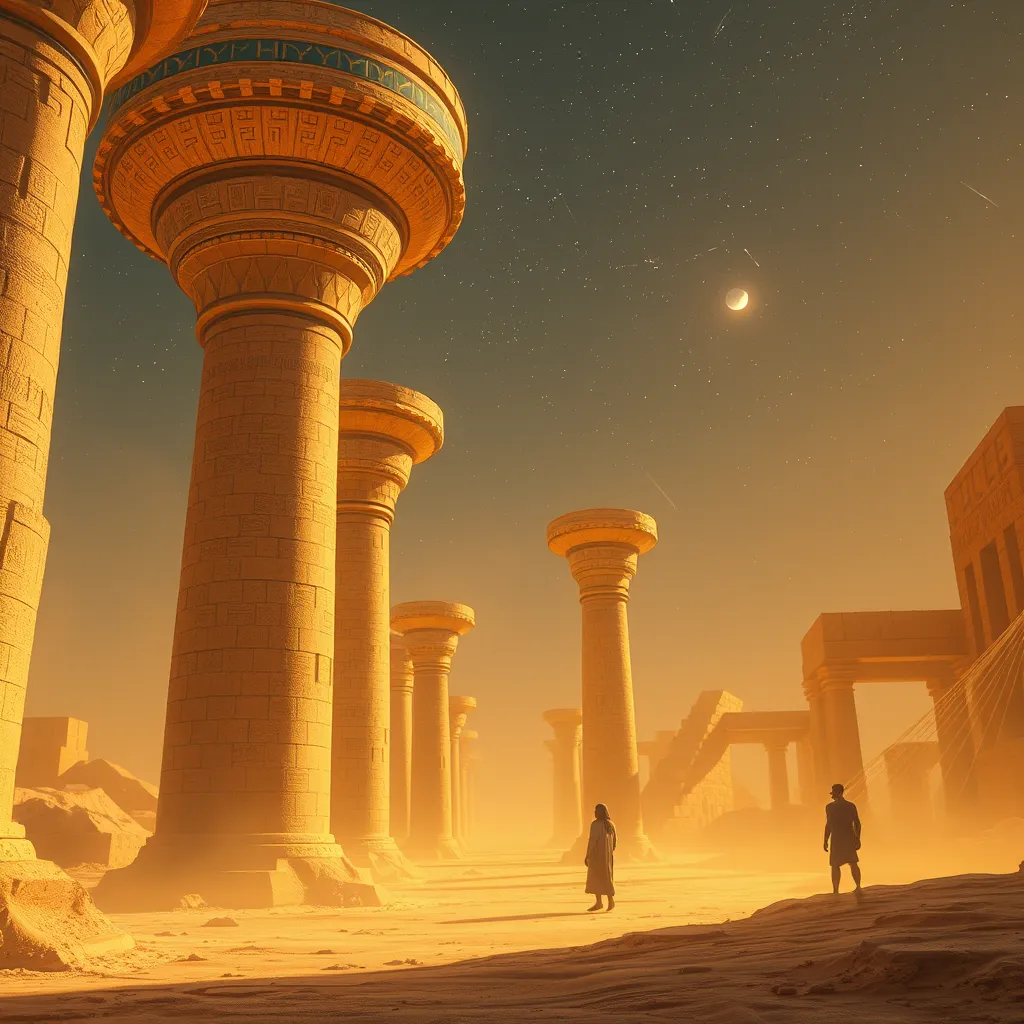The Duat: A Chronicle of the Dead
I. Introduction to the Duat
The Duat is an integral aspect of ancient Egyptian belief systems, representing the realm of the dead where souls embark on their journey after death. It is a place of both fear and fascination, crucial to the Egyptians’ understanding of the afterlife and the universe’s cyclical nature. This article aims to explore the Duat’s significance, historical context, geography, deities, and its representation in art and modern interpretations.
II. Historical Context of the Duat
The concept of the Duat has its origins in ancient Egyptian mythology, emerging around the time of the Old Kingdom. As the Egyptians developed their religious beliefs, the Duat evolved into a complex realm inhabited by various deities and spirits.
Over the centuries, the beliefs surrounding the afterlife transformed significantly. Initially, the afterlife was viewed as a continuation of earthly life, but as time progressed, the Egyptians began to see it as a place of judgment and transformation.
- The Duat was closely linked to the sun god Ra, who traversed the Duat during the night, symbolizing the cycle of life, death, and rebirth.
- Mythological tales, such as the Osiris myth, emphasized the importance of the Duat in the context of resurrection and immortality.
The influence of the Duat permeated Egyptian culture and society, affecting their burial practices, art, and literature, reinforcing their beliefs about life beyond death.
III. The Geography of the Duat
The Duat is often described as a vast, dark landscape filled with a variety of terrains, rivers, and obstacles. It is a place that one must navigate to reach the afterlife’s final destination.
Ancient texts depict the Duat as having:
- Fields of reeds, representing paradise.
- Fiery lakes and treacherous paths that souls must cross.
- Various gates and barriers that guardians protect.
Symbolically, the geography of the Duat represents the challenges and trials that the soul must face. It is often connected to other mythological realms, such as the sky, where the sun and stars reside, emphasizing the interconnectedness of life, death, and rebirth.
IV. Deities and Spirits of the Duat
Several key deities are associated with the Duat, each playing a crucial role in the afterlife journey:
- Osiris: The god of the afterlife, resurrection, and regeneration, presiding over the Duat.
- Anubis: The jackal-headed god responsible for mummification and guiding souls to the afterlife.
- Ma’at: The goddess of truth and justice, who plays a vital role in the judgment of souls.
Spirits and guardians inhabit the Duat, each tasked with guiding, protecting, or challenging the souls on their journey. Rituals performed by the living, such as offerings and prayers, facilitate the interaction between the living and the dead, ensuring a successful passage through the Duat.
V. The Journey Through the Duat
The soul’s journey after death is a central theme in the mythology of the Duat. Upon death, the deceased would enter the Duat, where they faced various trials and challenges that tested their worthiness.
Some of the key elements of this journey include:
- The crossing of the River of Night, symbolizing the passage into the afterlife.
- Encounters with monstrous beings and obstacles that could hinder their progress.
- The ultimate “Weighing of the Heart” ceremony, where the heart of the deceased is weighed against the feather of Ma’at.
The “Weighing of the Heart” ceremony is particularly significant, as it determines the fate of the soul. If the heart is lighter than the feather, the soul is deemed worthy and granted passage to the Field of Reeds, a paradise. If not, the soul faces annihilation at the jaws of Ammit, a fearsome creature that devours the unworthy.
VI. Symbolism and Art in the Duat
The Duat’s representation in ancient Egyptian art and literature is both rich and complex. It is depicted in tomb paintings, inscriptions, and texts, all of which serve to prepare the deceased for their journey and the challenges they may face.
Iconography associated with the Duat often includes:
- Images of Osiris, Anubis, and other deities overseeing the afterlife process.
- Scenes of the “Weighing of the Heart,” emphasizing the moral implications of one’s life.
- Symbolic representations of the afterlife, such as fields of reeds, which signify eternal bliss.
The Book of the Dead, a collection of spells and illustrations, was crucial for guiding souls through the Duat, providing them with knowledge and protection for their journey.
VII. Modern Interpretations and Discoveries
Archaeological findings have shed light on the Duat, revealing a wealth of knowledge regarding ancient Egyptian beliefs and practices related to death and the afterlife. Discoveries include:
- Tombs and burial sites that showcase burial rituals and the significance of the Duat.
- Artifacts that depict scenes from the Book of the Dead, illustrating the journey through the Duat.
Contemporary views on the Duat have evolved, with scholars recognizing its importance in understanding ancient Egyptian culture and spirituality. The Duat continues to influence modern literature, film, and art, serving as a source of inspiration for narratives exploring themes of death, the afterlife, and resurrection.
VIII. Conclusion
The Duat holds a significant place in ancient Egyptian beliefs, symbolizing the complex relationship between life and death. It serves as a testament to the Egyptians’ understanding of the afterlife and their rituals surrounding it. The enduring legacy of the Duat invites further exploration of ancient Egyptian culture and mythology, revealing insights into the human experience that resonate even today.
In reflecting on the Duat, we recognize its profound impact on how ancient Egyptians viewed life after death, underscoring the importance of memory and the spiritual journey that transcends the physical realm.




